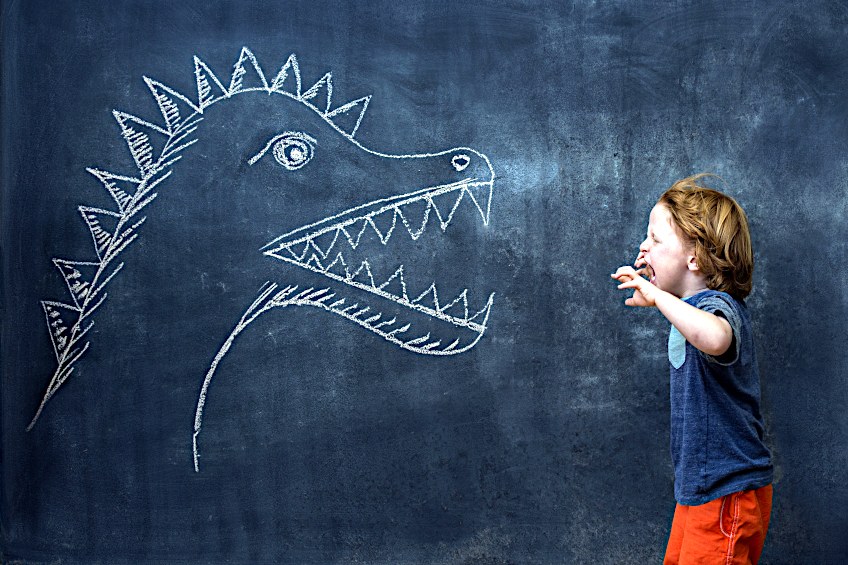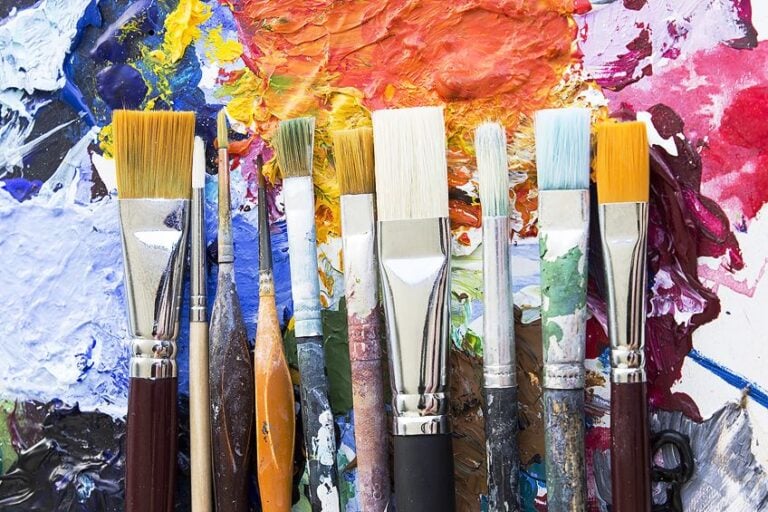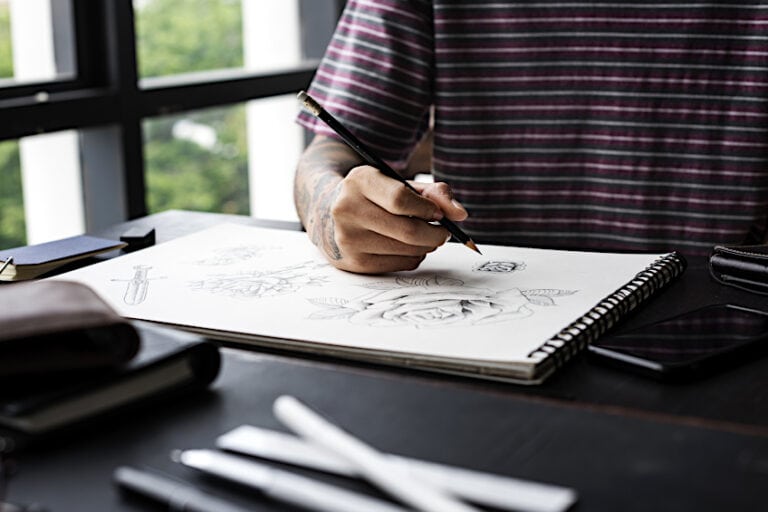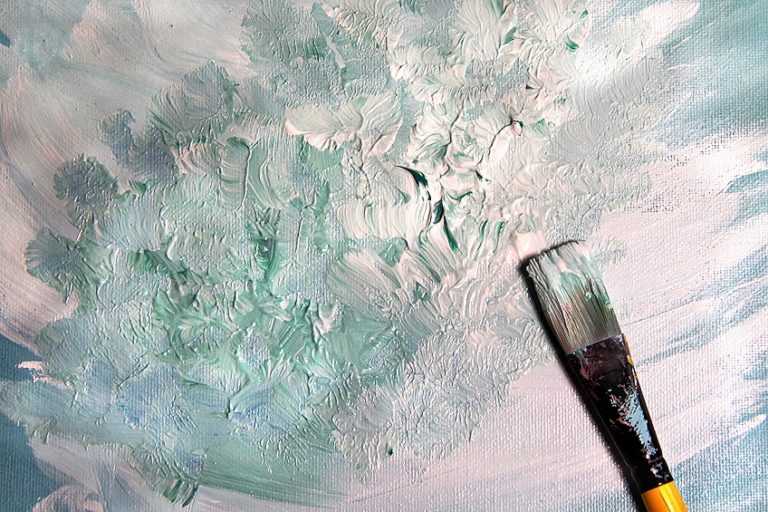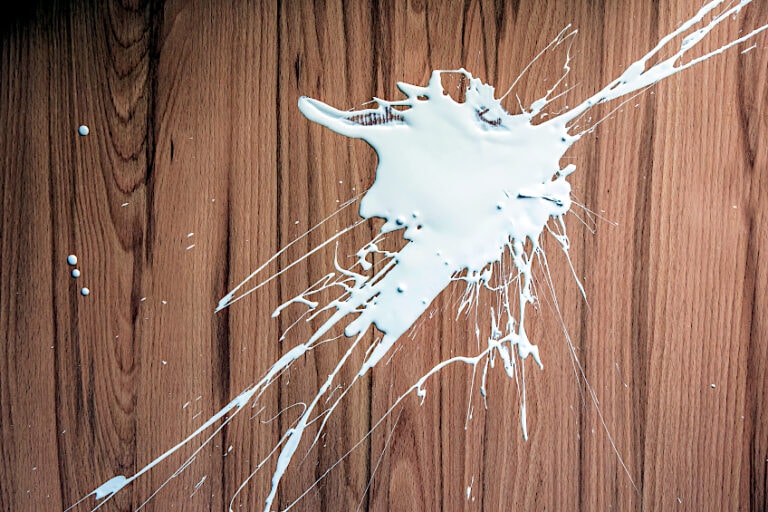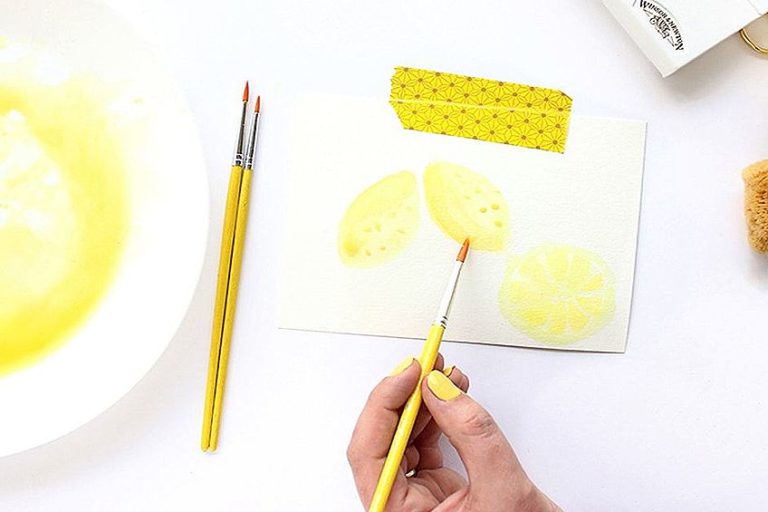What Is Drawing? – The First Form of Visual Representation
This post may contain affiliate links. We may earn a small commission from purchases made through them, at no additional cost to you.
What is drawing, and how can this important visual art form benefit us? The art of drawing is one of the most fundamental art forms in visual art that involves creating visual representations. From a form of documentation to a form of artistic expression, drawing dates back to prehistoric times, when humans first used the art form as a tool for communication. In this article, we will explore the history of drawing, as well as the different types of drawings and their benefits. Keep reading for more about this diverse and dynamic art form and its relevance for us today!
Table of Contents
An Introduction to the Art of Drawing
What is drawing, and how has drawing progressed as an art form in history? The history of drawing dates back thousands of years ago and was rooted in the evolution of human civilization. Drawing was one of the first forms of mark-making in early prehistoric cultures that were used to mark cave walls and record the experiences and messages of early humans.
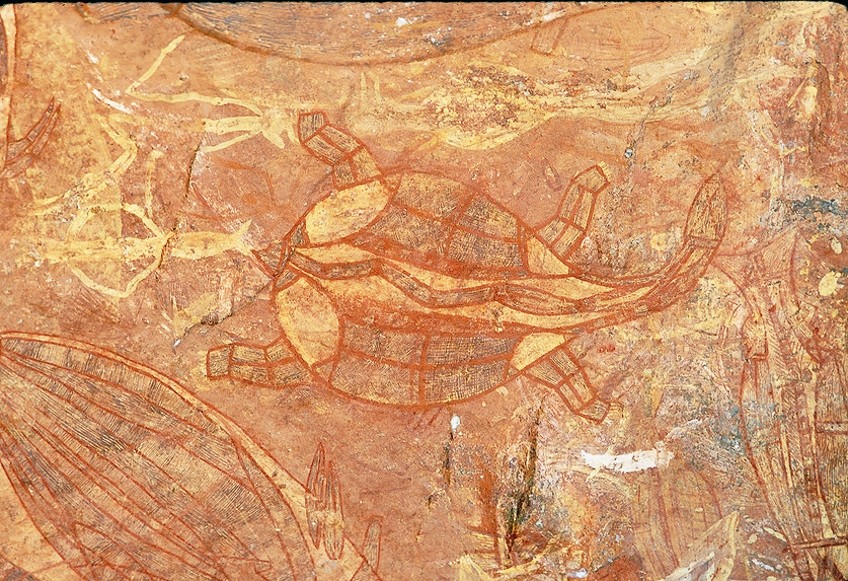 Prehistoric drawing on the Ubirr Rock in Australia (c. 18000 BCE); Tourism NT (with the link where possible), Attribution, via Wikimedia Commons
Prehistoric drawing on the Ubirr Rock in Australia (c. 18000 BCE); Tourism NT (with the link where possible), Attribution, via Wikimedia Commons
Since then, drawing has become a fundamental aspect of visual art that involves the creation of scenes, objects, and representations of different subjects using various marks such as lines and shapes on a surface. Master artists from all walks of life have adopted drawing as one of the first steps to discovering their artistic capabilities. Today, it remains a widely-practiced art form that offers endless possibilities, in conjunction with the advancements of technology, for innovative forms of self-expression.
A thorough drawing definition can be understood by reviewing the function of drawing in history. Many ancient civilizations across China, Mesopotamia, and Egypt saw drawing as a useful medium through which they could document religious rituals, and record historical events and scenes from daily life.
The ancient Egyptians developed hieroglyphics, an example, of which fused drawing and writing to produce a complex system of pictorial symbols and ideograms. The era of antiquities in Greek and Roman culture also leveraged drawing as a form of artistic training for artists to develop their skills. Drawing was thus used to create preliminary sketches and studies for much larger artworks. The proto-Renaissance and Medieval periods saw the use of illuminated manuscripts, which contained intricate drawings combined with text, presented as a beautifully illustrated publication for religious purposes. One can recall many Renaissance artists such as Michelangelo, Leonardo da Vinci, and Raphael, who used drawing as a tool to develop their techniques and skills in draftsmanship while producing new ways of studying the human form via perspective and elevated representations of human anatomy.
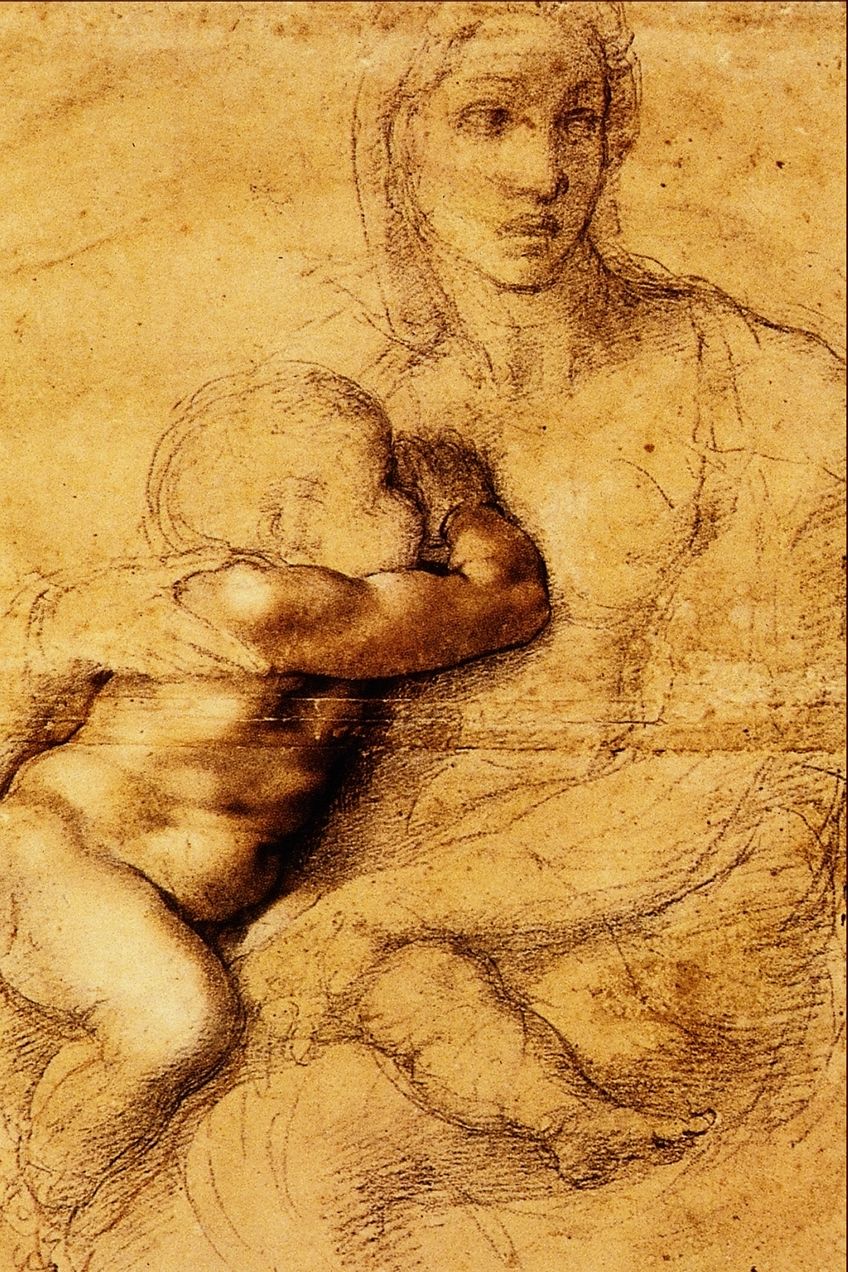 Madonna and Child by Michelangelo (16th Century); Michelangelo, Public domain, via Wikimedia Commons
Madonna and Child by Michelangelo (16th Century); Michelangelo, Public domain, via Wikimedia Commons
Throughout the 18th and 19th centuries, drawing continued to flourish and saw the emergence of many techniques and styles. From the Romantic era through to the Impressionist era, which embraced modern and emotionally-driven drawings, many artists were captured by the idea of creating spontaneous and quick sketches to capture the essence of a moment or emotion.
By the modern era, drawing definitions saw a shift in the possibilities for what could be considered a drawing, and therefore, an artwork. The 20th century witnessed a surge of innovative drawing methods and experiments through the works of Pablo Picasso, Wassily Kandinsky, and Henri Matisse, who all challenged the notions of traditional drawing techniques and explored non-representational forms. As such, drawing began to take on an abstract role, which was used to express the artist’s emotions while communicating the subliminal ideas of the artist’s subconscious, and everything in between.
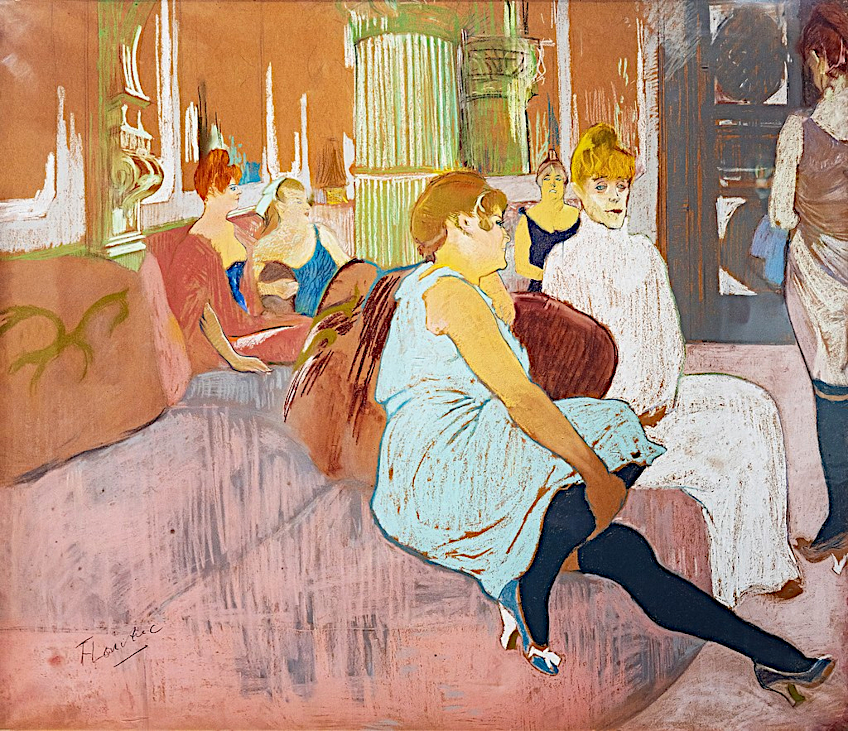 Salon at the Rue des Moulins by Henri de Toulouse-Lautrec (1894); Henri de Toulouse-Lautrec, Public domain, via Wikimedia Commons
Salon at the Rue des Moulins by Henri de Toulouse-Lautrec (1894); Henri de Toulouse-Lautrec, Public domain, via Wikimedia Commons
Below, we will explore all you need to know about drawing as a vital means of communication and artistic exploration. From pen and ink drawings to pastels, inks, charcoal, and graphite drawings, you can be sure that by the end of this article, you will have all the knowledge you need on drawing!
Understanding the Basics of Drawing
To grasp the principles of drawing, it is useful to understand the various elements that encompass the art form and how to practice it. It is useful to explore the various tools and materials needed to practice drawing since your material can vastly affect the texture, tone, and style of your artwork.
Tools and Materials in Drawing
A few basic tools and materials that you can use when drawing include graphite pencils, which are available in various levels of hardness, and are essential to creating different tones and lines in a drawing. One would also require drawing paper with a smooth or textured surface on which one can practice various media, including graphic pencils, ink, pastels, and charcoal. Many artist now even use digital media for drawing.
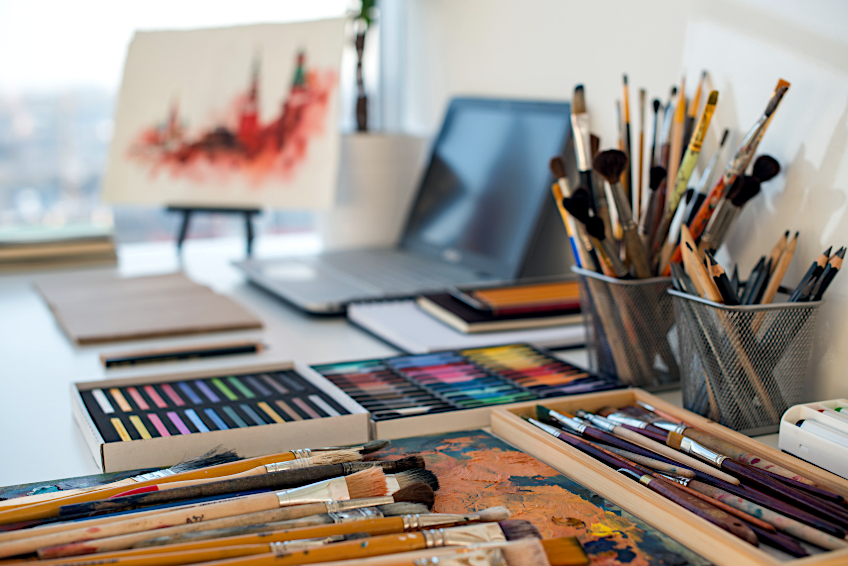
As a beginner, it is recommended that you purchase a multimedia drawing pad and a drawing board on which you can prevent your paper from shifting. A great medium for beginners to use when drawing is charcoal, which enables one to express their marks in a more textured and tonal way. Pen and ink drawings also offer more bold contrasts and crisp lines with more control than charcoal. Other great tools for drawing include colored pencils to add color for vibrant works and soft pastels which can be used to create a more painterly effect.
If you prefer greater control, it is recommended that you keep a ruler and a protractor on hand to create more accurate lines and angles and measure your subjects.
Blending stumps or tortillons are great tools used to smudge and blend graphite. If you are using charcoal, remember to purchase a fixative spray to protect your finished drawing from smearing or smudging. Additionally, one can also find a variety of pens on the market such as dip pens or fine liners to create more intricate and detailed artworks. Special art erasers also come in handy and include the kneaded eraser and soft eraser, which can be used to lift graphite, create highlights, or simply for light erasing on subtractive drawings.
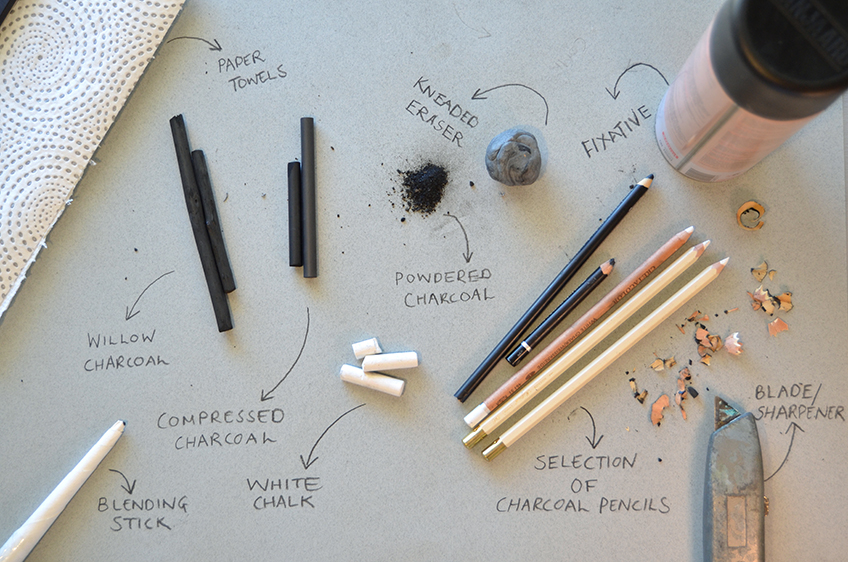
Basic Drawing Techniques
Once you have covered the basic materials and tools needed to start drawing, it is useful to review some of the basic techniques that can help you create texture depth and convey contrast in your drawing artworks. Below, we have listed the most common drawing techniques that most beginners learn in drawing.
- One of the most common drawing techniques is the hatching and cross-hatching method, which involves the creation of parallel lines to build up on value and shade areas in your drawing. Famous artists such as Leonardo da Vinci regularly used cross-hatching as a means to add depth and texture to his detailed drawings.
- In addition to this, Da Vinci also applied contour drawing, which is a technique that describes the process by which one outlines and defines the shapes of their subjects without lifting their pencil or looking at them. Contour drawing is said to promote careful observation and is a clever way to develop your memory of common shapes and forms.
- Stippling is another great technique that is used to create small dots or marks to build up the tone or texture of a drawing and give it a unique appearance. Stippling takes a great deal of patience and can also be seen in painterly works such as the works of George Seurat.
- One might also assume that the act of scribbling is just a random and nonsensical form of expression, however, scribbling is an expressive technique that can help you convey movement and energy in an artwork.
- In addition to these excellent techniques, artists who draw also use a technique known as blending, which involves gently rubbing charcoal or graphite to create smooth blends and transitions between tones and achieve a more softer and realistic aesthetic.
- To achieve a wider range of value in a monochromatic drawing, one can also employ the method of layering, which involves adding multiple layers of colored pencil or graphite to create depth.
- Scumbling is another technique that involves the use of a dry brush or pencil that is applied gently and lightly over a surface to create an atmospheric effect.
- One can also look to their smudging and blending tools to achieve smoother transitions and softer shading in areas that appear harsh. With these basic techniques in mind, you can be sure that you have a sufficient foundation with which to explore and develop your skills in drawing. By combining and experimenting with these different drawing techniques, you can also develop your knowledge of line, shape, and form.
Line, Shape, Form, and Perspective in Drawing
In drawing, it is vital to understand the various elements of art so that you can create intentional marks to convey your artistic objective. The element of line is a fundamental aspect that artists use to create marks on paper and canvas. This is the most basic form of visual communication and can vary in thickness, direction, length, and character to convey various emotions, construct shapes, or portray objects abstractly or realistically.
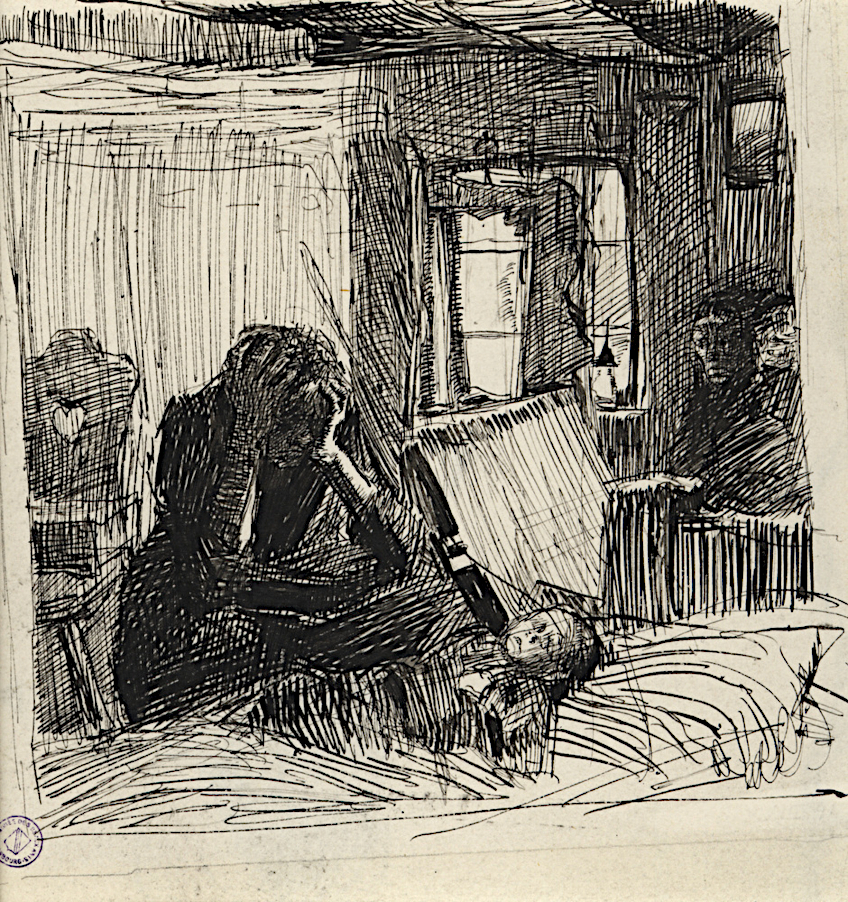 Misery by Käthe Kollwitz (1897); Käthe Kollwitz, Public domain, via Wikimedia Commons
Misery by Käthe Kollwitz (1897); Käthe Kollwitz, Public domain, via Wikimedia Commons
In drawing, lines can vary in form and can be drawn as curved, wavy, straight, or jagged. Lines also play an important role in defining the overall structure of your drawing and can add texture, depth, movement, or enhance the storytelling aspect of your drawing. Additionally, lines are used to outline shapes And represent the contours of an object. Drawing techniques such as cross-hatching and hatching involve the use of lines to build up tone, shade prominent areas, and create the illusion of form and depth.
The value and thickness of a line can also communicate different emotions and moods. Lines can be both bold and gentle, depending on how they are conveyed. Lines that appear fine indicate a sense of delicacy and fragility, while stronger, bolder lines indicate confidence and assertiveness.
Another important element in drawing is shape. Shape refers to the two-dimensional quality of a drawing created by enclosing a line and can be used to represent objects and forms in a composition. Shapes in drawing can be either geometric or organic, irregular, and abstract, and can encompass shapes such as triangles, squares, and circles. In drawing, shapes contribute significantly to the overall storytelling elements of the artwork, and when used effectively, can be used to create complex arrangements that help you identify the subjects and suggest volume.
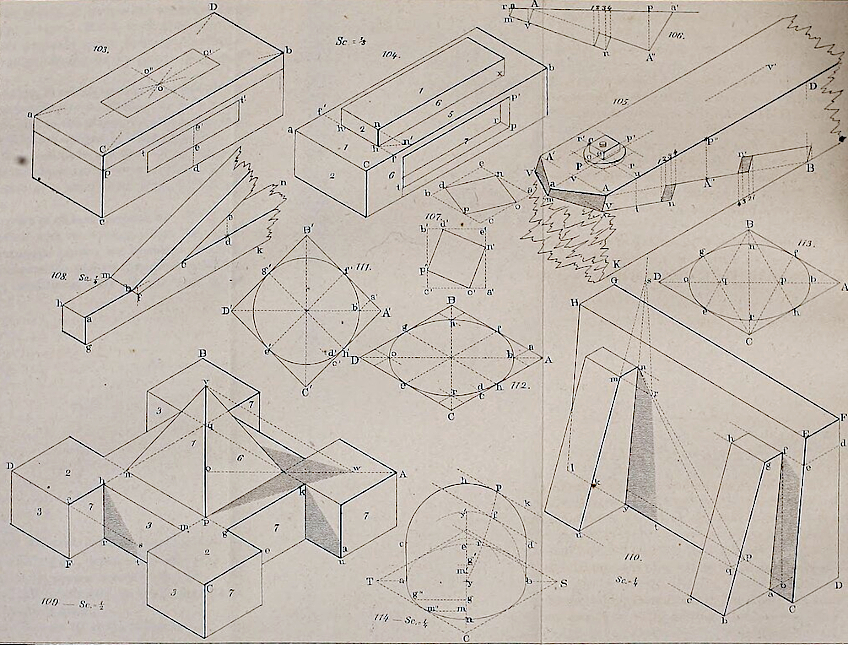 Page from an elementary three-dimensional drawing guide by Samuel Edward (1867); Internet Archive Book Images, No restrictions, via Wikimedia Commons
Page from an elementary three-dimensional drawing guide by Samuel Edward (1867); Internet Archive Book Images, No restrictions, via Wikimedia Commons
Another closely related element is form, which refers to the three-dimensional appearance of a subject in a drawing. Form extends beyond the understanding of lines and shapes and is a tool used to add volume and depth to an artwork. Artists can create the illusion of form by using various shading techniques to produce highlights and shadows and make the drawing appear more realistic. It is key to understand how the element of the form works to capture the way that subjects and objects interact with the environment. For example, light is an important subject that many artists leverage to create a sense of space and depth in their drawings.
Another way that drawing artists create a sense of depth and three-dimensionality is by employing various perspective devices. Perspective involves the representation of objects or scenes as they appear from a certain point of view.
Perspective techniques consider how objects and subjects recede into the distance. Techniques such as linear perspective utilize various vanishing points and converging lines from a scene to achieve this effect. Other types of perspective techniques such as one-point, two-point, and three-point perspectives are also used to represent spatial relationships. Perspective is thus an incredible and essential tool that can help you to create immersive drawings that also accurately represent the visual world from a subjective point of view.
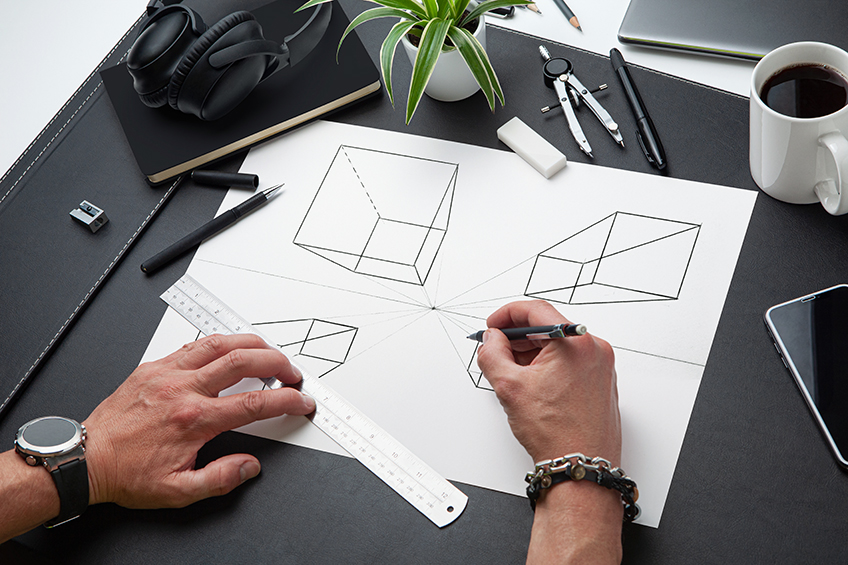
The Different Types of Drawing
Now that you understand the different tools, materials, and techniques required to start your practice in drawing, it is now time to review the different types of drawings that you can try your hand at.
- Sketching: This method refers to a type of freehand drawing technique that is defined by loose lines and quick outlines that are often used in the preliminary stages of the artistic project. Sketching is used to capture the basic elements of an object and serves as a rough drawing.
- Charcoal drawing: These are drawing artworks that are produced using charcoal sticks or charcoal pencils to create rich and expressive drawings. Charcoal drawings can appear to be very dramatic and textured, and offer a wide variety of tonal values.
- Pen and ink drawing: This type of drawing artwork involves the use of pens or ink and various tips, such as dip pens or fine liners, to create precise lines. These types of drawings are often used to portray comics or illustrations and are recognized as a type of technical drawing.
- Pencil drawing: These drawings are quite easy to identify and are versatile since they employ different grades of graphite pencils to illustrate the different textures and tones on a two-dimensional surface. Pencil drawings enable artists to create both light sketches and dark renderings, and offer a broader sense of control.
- Colored pencil drawing: These types of drawings involve the use of colored pencils to add a colorful and vibrant touch to a drawing. Colored pencil drawings offer artists the opportunity to add more Realism to their works and are a popular choice among illustrators.
The Benefits of Drawing
There are many benefits to learning the art of drawing and some of them may surprise you. The art of drawing has proved to significantly improve one’s motor skills and hand-eye coordination. Drawing also involves the act of observation, which helps artists to control their movements and translate what they see onto paper. Drawing is a medium that enhances one’s creativity and nurtures creative thinking.
Creative thinking has also been proven to foster intelligence and enable one to express their ideas and emotions in unique ways, such that the chances of success are increased in one’s adult years.
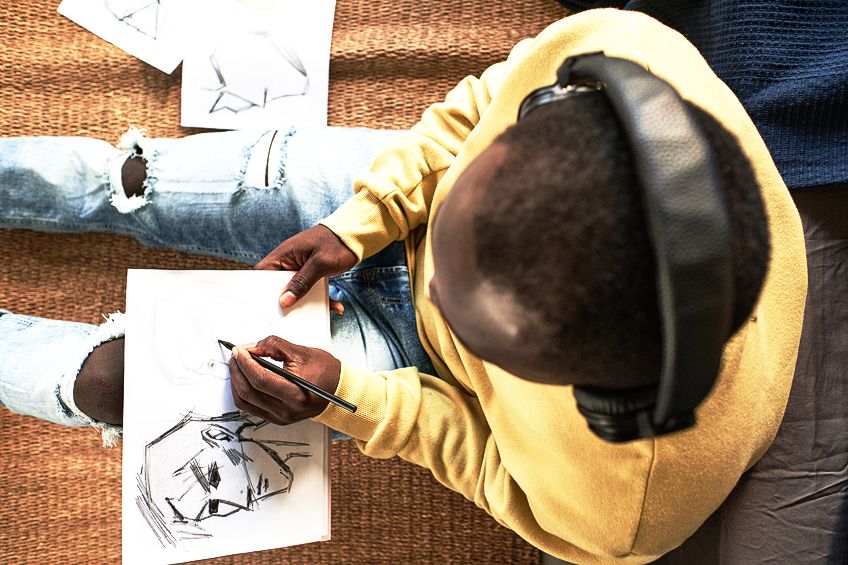
In addition to stimulating creativity and motor skills, drawing has also proven to relax and alleviate stress and anxiety. As a meditative activity, drawing can also enhance one’s memory retention and improve visual comprehension. As an art form and significant tool of self-expression, drawing has proved to be a remarkable medium to explore one’s personal growth and artistic aspirations, while refining their skills on a physiological level.
As a medium, drawing remains one of the most fundamental and diverse art practices that many artists rely on to develop their techniques and express their emotions. We cannot stress the importance of learning about drawing as a tool to enhance creativity, hand-eye coordination, and boost cognitive skills. By understanding the basic elements of drawing and the various techniques required to create drawing artworks, one can gain a thorough appreciation of the foundations of art that help us interpret the world around us.
Frequently Asked Questions
What Is Drawing?
Drawing is an art form that is used to create visual representations using various mark-making techniques. Drawing involves the use of shapes, lines, forms, and perspective techniques to convey observations and ideas, and has long been used as a form of communication and artistic expression across the disciplines of fine art, design, architecture, and illustration.
What Is the Most Famous Drawing Artwork?
Vitruvian Man (c. 1490) is considered to be the most famous drawing artwork, which was created by Leonardo da Vinci in pen and ink. The Vitruvian Man drawing illustrates the theory proposed by the Roman architect Vitruvius in the 1st century BCE that focuses on the theory of ideal human proportions. The drawing also contains notes penned in mirror script by Leonardo da Vinci.
What Are the Benefits of Drawing?
There are over several benefits when considering the art of drawing. Drawing has proven to enhance one’s hand-eye coordination, reduce stress, and improve creativity. Drawing also helps one to develop problem-solving skills and boosts memory. By practicing drawing, individuals can express their observations, thoughts, and emotions about the world.
Larissa Meyer is a 32-year-old mother from Michigan and creative spirit since childhood. Her passion for painting and drawing has led her to an education as an illustrator and a career as a freelance graphic designer. She has a Bachelor of Fine Arts in Illustration and a degree in Graphic Design. Larissa is a talented artist who is able to master a wide range of styles and techniques to bring her artistic vision to life. Her greatest passion is currently fluid painting and epoxy resin art. Larissa’s love for art and her knowledge and experience in illustration make her the perfect Creative Director for our fluid-painting.com team. She is the creative head of our team and shares her passion and knowledge with our community through articles and tutorials.
As a mother of a 2-year-old daughter, Larissa also understands the importance of fostering creativity in early childhood. She uses her experience and knowledge to help other parents inspire their children and develop their artistic skills as well.
Learn more about Larissa Meyer and about us.

